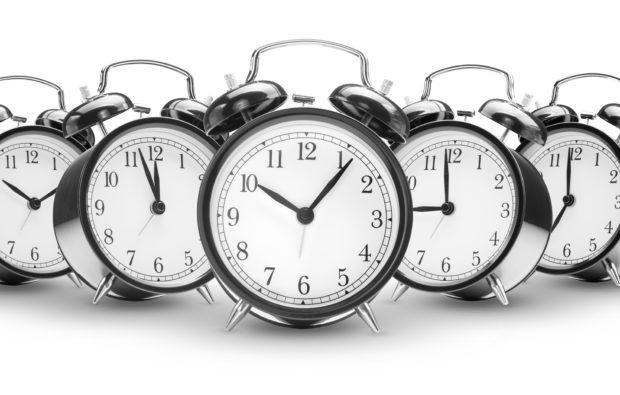The hours between 4 p.m. and 6 p.m. have become the time when many workers leave the office or take a break from remote work. It’s being called “the workday dead zone.” Many employees use that couple of hours to do everything from beat traffic, pick up their kids from daycare and even hit the gym. The Wall Street Journal reports workers aren’t just using this time to blow off work and relax, they’re making up the time with a third shift at night to finish off the workday.
Microsoft researchers have found evidence of what they are calling a “triple-peak” phenomenon. Workers’ keyboard activity spikes in the morning, the afternoon and around 10 p.m.
“Sometimes it’s worthwhile to take a step back from work, rather than trying to just keep grinding,” says Nicole Coomber, assistant dean of Experiential Learning and clinical professor of management & organization at the University of Maryland Robert H. Smith School of Business. She cites the research of author, psychologist and economist Daniel Kahneman on what he terms System 1 and System 2 Thinking. “What we know from neuroscience and Kahneman’s work is that breaks help us when we’re working, particularly on high-energy, creative work. You can’t just sit for eight hours and be creative at a high level for that long.”
Coomber says power dynamics come into play with the workday dead zone as well. While many managers are frustrated by it, because they can’t contact some subordinates or schedule staff meetings at 4 p.m., she says, “acknowledging power and status in this conversation is for me, what is the interesting and often unspoken piece of it.” If the high-echelon creative people at a company say they need to get off at 4 o’clock every day, they will be allowed to, says Coomber, because that kind of talent is in demand. Firms don’t want to lose those people. They are hard to replace.
“The lower-level workers are the ones who have less power, less status within the organization. They are subjected to the demands of the company to be in at certain times, to work a certain number of hours or to work in certain ways.” But Coomber feels we never want to talk about power. “We have a very egalitarian mindset of ‘oh we’re all equal in this country, but in practice that doesn’t actually happen.'”
The issue of demographics comes into play with the standard eight-hour day, as well. Generation Z college students couldn’t take classes on campus, so they completed coursework completely online. They also observed office work being done at home exclusively—at a time when they were preparing to enter the workforce. As a result, they see the world of work differently. Twenty-six percent of Gen Z say they’d work harder and remain loyal to a company longer if they had flexible schedules. Managers who tell this generation they have to be on the job until 6 o’clock may find that falls flat. Many in that age group will leave and find an organization where they don’t have to do that, says Coomber.
The bottom line is employers and managers who have a problem with the workday dead zone have to face the facts: It’s the new way of work. Flexibility is now key to keeping top talent and successfully recruiting new talent. There is no more “my way or the highway.”
Source: University of Maryland Robert H. Smith School of Business





















 Federal Aviation Notice Warned of Slackline Before Deadly Arizona Helicopter Crash
Federal Aviation Notice Warned of Slackline Before Deadly Arizona Helicopter Crash  U.S. High Court Rejects $2.46B Boy Scouts Sex Abuse Settlement Challenge
U.S. High Court Rejects $2.46B Boy Scouts Sex Abuse Settlement Challenge  U.S., UK, and Canada Consumers Suffer the Most Data Breaches: Report
U.S., UK, and Canada Consumers Suffer the Most Data Breaches: Report  Why ‘Good Enough’ Is Killing Insurance: The Hidden Cost of Satisficing
Why ‘Good Enough’ Is Killing Insurance: The Hidden Cost of Satisficing 




